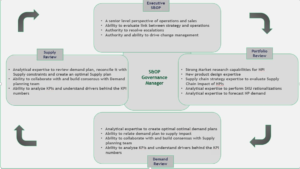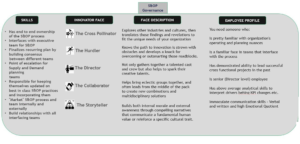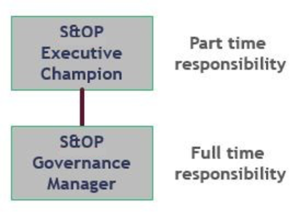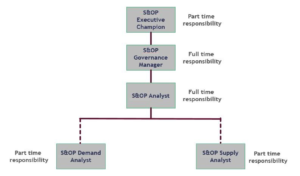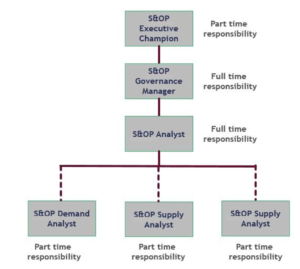Building Best in Class Sales & Operations Planning Teams
Meet the Experts
By Kumar Singh, Research Director, SAPinsider
It is All about Teams
A highly collaborative process like Sales & Operations Planning (S&OP) is all about the team. How you design your core S&OP or Integrated Business Planning (IBP) team may end up determining the magnitude of the effectiveness of your S&OP process. The approach suggested in this post is based on the book “Ten faces of innovation” by Tom Kelley and Jonathan Littman. The book is one of its kind in several aspects:
1. Identifies the types of employees you need in your organization to propagate innovation
2. Describes how it is a MUST to have ALL these types to drive true innovation and transformation
3. Helps you with ideas on how to structure teams using these types to create innovative teams
The book borrows its title from the ten skillset types/employee types described in the book. The ten types are shown in the illustration below. Though I created the illustration, all the terms used in it are from the book but the insights have been translated into a supply chain context. I will explain these types as we start building the team structure of the S&OP process with these types.
Note that these skill sets are not the only skills an individual may have. It means that if someone is in the category of “The Experimenter”, that is the predominant skill set that sets them apart.
Quick Recap of the Elements of a Best-in-Class S&OP Process
To understand how and why of building the team, we first need to envision what the best-in-class process S&OP process should look like. The left part of the illustration below (Pre S&OP Processes) is an adaptation from Robert P. Burrow’s book -“The Market-Driven Supply Chain”.” In contrast, the core S&OP process representation on the right is based on my experience establishing such processes, combined with my perception of the best-in-class approach of a continuous S&OP Process.
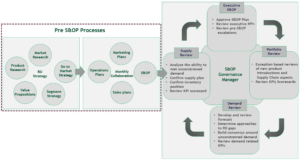
The left-hand part of the illustration will not be the focus of this article.
Team Building Step I: Evaluate the Skillset requirements and roles
Now let us break down the key activities depicted in the core S&OP process in the illustration above into skillsets/roles for each of the four buckets (Executive S&OP, Portfolio Review, Demand Review, and Supply Review).
As you can see in the representation, an S&OP Governance Manager is sitting in the midst of the cycle. We will discuss the specifics of that role in a subsequent section.
Step II: Align each skill set with one of the faces of innovation and determine an S&OP team role
We will start aligning each skill set with a face of innovation, translate that into an employee profile you can use to fill that role, and start building the structure of a best-in-class S&OP team. For each such assignment we will use the following structure:
SKILLS: Identify the skill sets required
INNOVATOR FACE: Map the skill set with the type of innovative skill types that are required
DESCRIPTION: Provides a brief description of that skillset
EMPLOYEE PROFILE: The employee’s traits who will be successful in that role, based on the mapping done using skills and Innovator face.
Executive S&OP Champion
This person is the executive interface to your S&OP process. They fulfill a must-have criteria of having an active executive involvement in the process.
We can start building the team structure with this executive-level position, as shown below. Key skills of someone in this role have been defined in the illustration above.
S&OP Governance Manager
This is the person who holds the Holy Grail of your S&OP Process. Finding the individual within your organization who has all the capabilities illustrated below may be challenging but not impossible. This role reports directly to the Executive S&OP champion and only answers to him.
This type of authority is critical since they have to establish the final consensus in the process. Their skills are shown in the illustration below.
We will now add this role to the S&OP team structure. As mentioned earlier, this role will report directly to the Executive S&OP champion.
S&OP Analyst
Reporting directly to the S&OP Governance manager, this person plays two critical roles:
- Maintains S&OP Data repository, Dashboard, and related documents. Analyzes the plans received from different teams
- Plays the role of a project coordinator for the recurring S&OP meetings
Their skills have been illustrated below.
We will add this role to our S&OP team structure:
S&OP coordinators in Supply and Demand planning teams
Each of these teams (Demand and Supply Planning), will have individuals who devote a significant percentage of their time to S&OP planning process (managing and continuous improvement) – a minimum of 50% of their time.
The person on the demand planning side definitely needs to be more analytical, since one of their roles would be forecasting. Though the forecast numbers requirements for S&OP may not be extremely granular, a significant aspect of the process relies on this forecast. You need a person with excellent depth in forecasting and understanding forecasting accuracy metrics.
The coordinator may not be an Analytics expert (like the demand side). However, they still need to be fairly analytical, to be able to take the consensus-built demand forecast and translate it into various elements of a Supply plan.
We will now add these two roles to our S&OP architecture. Note that these two do not report directly to anyone in the core S&OP governance but rather have a dotted line.
The New Product Introduction (NPI) Program Manager
The NPI Program Manager should play the role of S&OP champion in the product review team depicted in the high-level process diagram in the beginning. Considering their role, at least 25% of their time should be devoted to closely collaborating with the S&OP core team to ensure that new product introduction nuances are covered in the process.
The Final Team structure
The final team structure should look something like the one shown below. With the traits and skill sets mentioned above for each of these roles, you should be able to build a best-in-class team.
What does this mean for SAPinsiders?
The approach indicated in this article has been kept generic on purpose since each company in every industry needs to tailor their S&OP team and process based on their specific and unique aspects.
This approach can be used as a framework to plan the team structure for a plethora of strategic teams. As I consistently emphasize in my posts and articles, the first step of transformation initiatives should be to restructure your Supply Chain team. Leveraging an approach where you build a team that leverages different strengths from various individuals will put you on the path to a successful transformation.
Leverage people analytics, a combination of data analytics, neuroscience, and behavioral psychology, to understand the skill set arsenal of your key leaders and star performers. You already know these individuals are key to your success. Understanding their key strengths will allow you to “mix-and-match” them to build SWAT teams that can transform any critical process in your organization.



